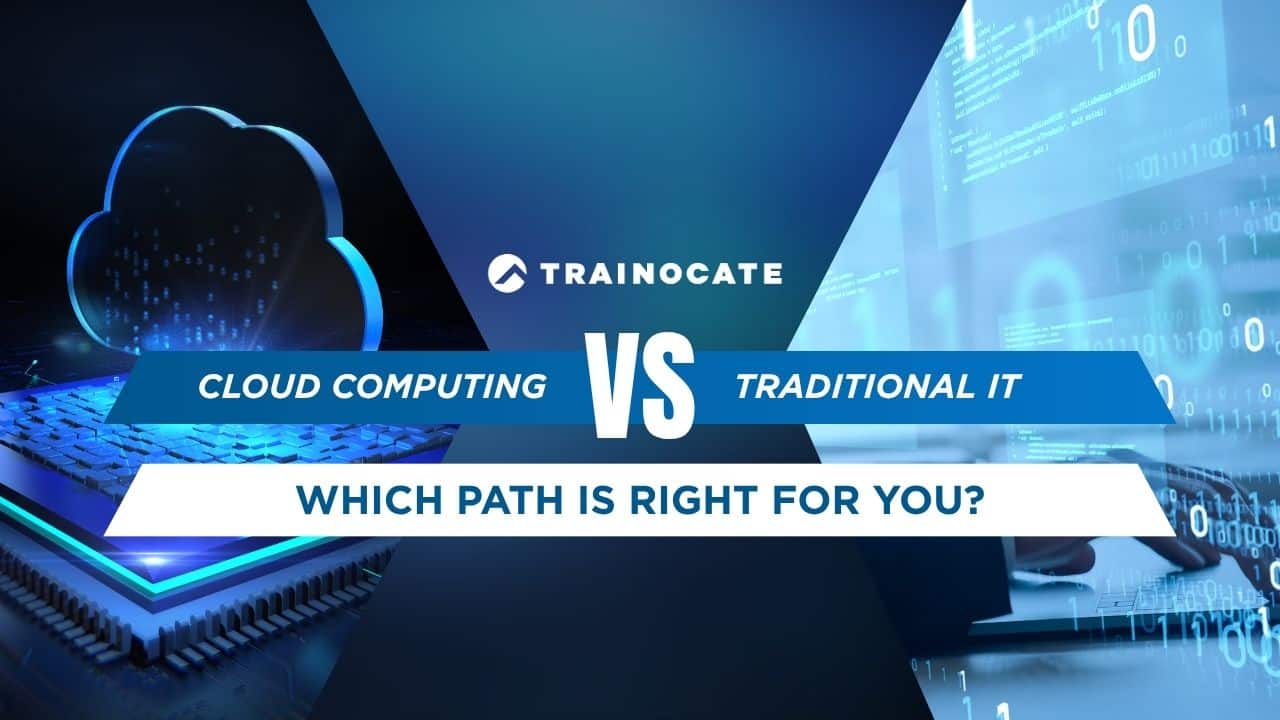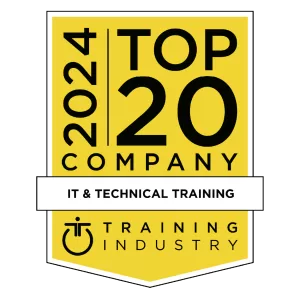Cloud Computing vs. Traditional IT: Which Path is Right for You?
Cloud Computing vs. Traditional IT: Which Path is Right for You?

Nearly all modern organizations are transitioning to digital infrastructure and choosing cloud-based environments for their ability to streamline workflows, enhance operational efficiency, and deliver strong returns on investment. From government agencies to startups, the shift away from traditional, on-premises systems is gaining momentum across sectors, driven by the advantages of cloud technology.
Cloud migration plays a crucial role in this transition, facilitating continuous innovation and operational cost reduction by moving applications and workloads to the cloud.
Digital transformation is crucial for organizations seeking to innovate and reduce operational costs, with cloud computing being a key driver of this change.
While traditional IT is far from obsolete, cloud computing is redefining how services are delivered, data is stored, and innovation is deployed. For jobseekers and IT professionals, understanding the differences between the two approaches is essential to making informed career decisions.
This article explores how cloud and traditional IT compare — in structure, cost, scalability, and professional roles — and how you can decide which path best aligns with your skills and goals.
Physical servers
Networking equipment
On-site data centers
Locally installed software
Management: Internal IT teams are responsible for maintaining infrastructure, performing updates, handling downtime, and securing data (Medium).
Understanding Cloud Computing

What is Cloud Computing?
Cloud computing is a revolutionary paradigm that enables network access to a scalable and elastic pool of shareable physical or virtual resources. This means users can access resources on-demand, without the need for direct management of the underlying infrastructure. Cloud environments are specialized setups within cloud computing that cater to different roles, such as cloud DevOps engineers and cloud security engineers, who manage and secure applications and services within various cloud infrastructures. Whether it’s servers, storage, or applications, cloud computing provides a flexible and efficient way to meet IT needs. By leveraging cloud services, organizations can scale their operations seamlessly, ensuring they have the necessary resources whenever they need them, without the overhead of maintaining physical servers.
Definition of Cloud Computing
Cloud computing is a transformative model for delivering computing services over the internet. Instead of relying on local hardware and software, users can access a shared pool of resources such as servers, storage, databases, and applications on-demand. This model allows organizations to scale their IT infrastructure dynamically, meeting their needs without the burden of managing and maintaining physical hardware. By leveraging cloud services, businesses can optimize their operations, reduce costs, and enhance flexibility, making it easier to adapt to changing demands and technological advancements.
Types of Cloud Computing: Public, Private, and Hybrid Clouds
Cloud computing comes in three primary forms: public, private, and hybrid clouds, each offering distinct advantages.
Public Clouds
Public clouds are managed by third-party providers like Amazon Web Services (AWS), Microsoft Azure, and Google Cloud Platform (GCP). These multi-tenant environments allow multiple organizations to share the same infrastructure, benefiting from economies of scale and reduced costs. Public clouds are ideal for businesses looking for scalable and cost-effective solutions without the need for extensive in-house IT resources.
Private Clouds
Private clouds are dedicated to a single organization, providing enhanced security and control over data and applications. These clouds can be hosted on-premises or in a third-party data center, making them suitable for sensitive or mission-critical workloads. Private clouds offer the benefits of cloud computing while ensuring that sensitive information remains within the organization’s control.
Hybrid Clouds
Hybrid clouds combine the best of both public and private clouds, offering a flexible and scalable infrastructure. Organizations can leverage the cost-effectiveness and scalability of public clouds for non-sensitive operations while maintaining critical workloads in a private cloud environment. This approach allows businesses to optimize their IT resources and adapt to varying demands efficiently.
Cloud models
Physical servers
Services offered via the internet and shared across organizations
(Hewlett Packard Enterprise)
Private Cloud
Hosted on private networks for one organization
Hybrid Cloud
A blend of public and private models for flexible resource allocation
Cloud Computing Services
Key Differences Between Cloud and Traditional IT
| Feature | Traditional IT | Cloud Computing |
|---|---|---|
| Cost Structure | Capital expense (CAPEX) for hardware/software | Operational expense (OPEX) based on usage |
| Scalability | Hardware expansion required | On-demand, elastic scaling |
| Maintenance | In-house teams handle maintenance, including software maintenance | Handled by cloud providers, alleviating the burden of software maintenance |
| Security | Full control, full responsibility | Shared model, strong provider baseline security |
| Accessibility | Limited to on-site or VPN | Accessible from anywhere with internet |
Source: MoldStud
These structural differences have a direct impact not only on how businesses operate, but also on what skills are in demand across the workforce. A cloud network engineer is a specialized IT professional responsible for designing and maintaining an organization’s cloud services across various networks. This role involves collaboration with cloud architects and engineers to assess business needs and recommend suitable cloud-based platforms.
Career Implications: Traditional IT vs. Cloud Computing
As companies shift toward digital-first operations, cloud roles are gaining prominence, not just in large tech firms but in banking, retail, logistics, and government services. Cloud computing professionals are in high demand, and the demand for cloud skills is showing no sign of slowing down. Application developers play a crucial role in this ecosystem by contributing to the coding and production aspects of new online platforms, working collaboratively with platform engineers throughout the software development lifecycle.

Salary and demand trends
Cloud professionals earn 20–30% more on average than their traditional counterparts in equivalent roles, according to reports from Hays. The average salary for cloud-related job roles, such as cloud automation, security, and engineering, reflects this trend, with specific figures highlighting the financial prospects in the cloud computing industry. The projected job growth in cloud computing is significant, with increasing demand for roles in cloud support, networks and systems, software development, and cybersecurity, indicating strong future opportunities in this sector.
Employers face persistent difficulty hiring for intermediate cloud roles (Hays Asia Salary Guide 2025).
In May 2024, Gartner forecast that global end-user spending on public cloud services would reach $675.4 billion, up from $561 billion in 2023.

Skills required
Cloud services can be categorized into different service models, each offering unique benefits. Infrastructure as a Service (IaaS) provides access to essential networking features, virtual or dedicated computers, and data storage space. IaaS offers the highest level of management control, making it ideal for businesses that require extensive customization. Proficiency in programming languages like Java and Python is crucial for cloud engineers and software engineers to effectively develop and integrate cloud-based solutions.
Platform as a Service (PaaS) eliminates the need for users to manage underlying infrastructure, such as hardware and operating systems, allowing them to focus on developing applications. Effective database management is essential in this context, as AWS provides a range of database options that facilitate efficient scaling, backup, and overall management of both SQL and NoSQL databases, promoting enhanced operational efficiency.
Software as a Service (SaaS) delivers a complete product that is run and managed by the service provider, offering users a ready-to-use solution.
Factors to Consider When Choosing Your Path
If you’re at a career crossroads, consider the following:
Information technology plays a crucial role in career decisions, offering diverse opportunities in areas like cloud computing, cybersecurity, and technical support. Understanding the foundational skills in information technology can help you navigate and specialize in various IT career paths.
For many professionals, a hybrid skill set — understanding both traditional infrastructure and cloud-native tools — is becoming the most versatile and resilient career foundation.






